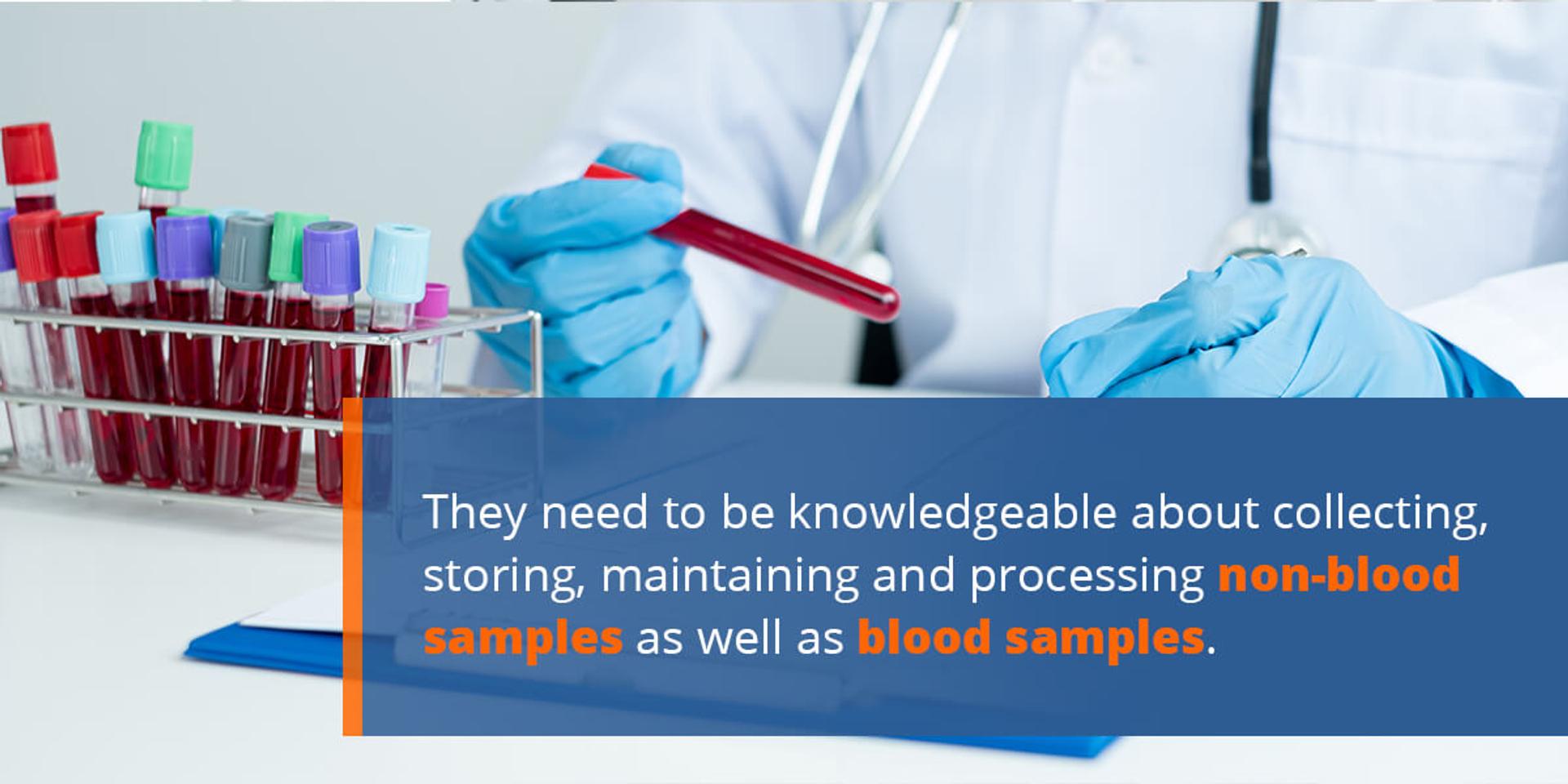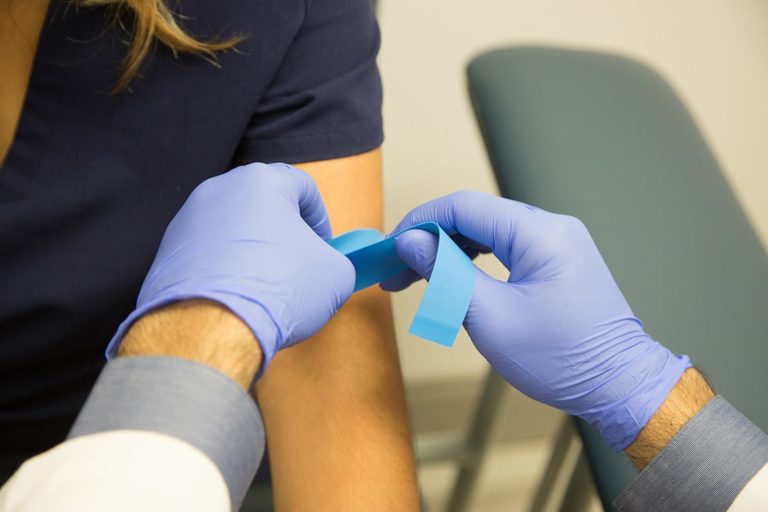Some Of Northeast Medical Institute - New Haven Campus Phlebotomy Course & Cna Class
Some Of Northeast Medical Institute - New Haven Campus Phlebotomy Course & Cna Class
Blog Article
Some Known Details About Northeast Medical Institute - New Haven Campus Phlebotomy Course & Cna Class
Table of ContentsThe Main Principles Of Northeast Medical Institute - New Haven Campus Phlebotomy Course & Cna Class Get This Report about Northeast Medical Institute - New Haven Campus Phlebotomy Course & Cna ClassThe 5-Minute Rule for Northeast Medical Institute - New Haven Campus Phlebotomy Course & Cna ClassFascination About Northeast Medical Institute - New Haven Campus Phlebotomy Course & Cna ClassNortheast Medical Institute - New Haven Campus Phlebotomy Course & Cna Class Can Be Fun For AnyoneWhat Does Northeast Medical Institute - New Haven Campus Phlebotomy Course & Cna Class Mean?
The use of such devices need to be gone along with by various other infection prevention and control methods, and training in their use.For setups with reduced resources, expense is a driving consider purchase of safety-engineered tools - CNA Courses. Where safety-engineered gadgets are not offered, competent usage of a needle and syringe is acceptable. Accidental exposure and certain info concerning an event need to be tape-recorded in a register. Support solutions need to be promoted for those that undergo unintended direct exposure.
labelling); transport conditions; analysis of outcomes for professional monitoring. In an outpatient department or facility, provide a devoted phlebotomy cubicle containing: a tidy surface area with 2 chairs (one for the phlebotomist and the other for the patient); a hand clean basin with soap, running water and paper towels; alcohol hand rub. In the blood-sampling room for an outpatient division or facility, give a comfy reclining couch with an arm rest.
The Basic Principles Of Northeast Medical Institute - New Haven Campus Phlebotomy Course & Cna Class
Make sure that the indicators for blood tasting are plainly defined, either in a written protocol or in documented guidelines (e.g. in a research laboratory type). In all times, follow the approaches for infection prevention and control detailed in Table 2.2. Infection prevention and control techniques. Collect all the equipment needed for the treatment and area it within secure and simple reach on a tray or cart, guaranteeing that all the products are plainly visible.
Where the client is adult and aware, comply with the actions detailed listed below. Present yourself to the individual, and ask the person to mention their complete name. Examine that the lab type matches the patient's identification (i.e. match the individual's information with the lab type, to make sure exact identification). Ask whether the license has allergic reactions, phobias or has ever before collapsed during previous shots or blood draws.
Make the patient comfy in a supine position (if possible). The person has a right to decline a test at any type of time before the blood tasting, so it is essential to guarantee that the person has actually understood the procedure - Phlebotomy Courses.
Northeast Medical Institute - New Haven Campus Phlebotomy Course & Cna Class Things To Know Before You Get This
Expand the person's arm and evaluate the antecubital fossa or lower arm. Locate a capillary of an excellent dimension that is visible, straight and clear. The representation in Section 2.3, reveals usual positions of the vessels, however several variations are feasible. The mean cubital blood vessel lies between muscles and is normally the most easy to penetrate.
DO NOT put the needle where capillaries are diverting, since this boosts the opportunity of a haematoma. The blood vessel needs to be visible without applying the tourniquet. Situating the blood vessel will certainly help in determining the proper size of needle. Use the tourniquet regarding 45 finger widths above the venepuncture website and re-examine the vein.
Haemolysis, contamination and presence of intravenous liquid and medicine can all alter the outcomes (39. Nursing personnel and doctors may access central venous lines for specimens following procedures. Nevertheless, samplings from main lines lug a threat of contamination or erroneous research laboratory examination results (https://www.ted.com/profiles/47186180). It serves, yet not ideal, to injure specimens when initial presenting an in-dwelling venous device, before linking the cannula to the intravenous fluids.
Indicators on Northeast Medical Institute - New Haven Campus Phlebotomy Course & Cna Class You Need To Know
Allow the location to completely dry. Failing to permit enough call time increases the threat of contamination. DO NOT touch the cleaned website; particularly, DO NOT place a finger over the blood vessel to lead the shaft of the exposed needle. It the website is touched, repeat the disinfection. Execute venepuncture as complies with.
Ask the client to form a hand so the capillaries are a lot more popular. Enter the vein promptly at a 30 degree angle or less, and remain to introduce the needle along the blood vessel at the easiest angle of entry - CNA Classes. As soon as adequate blood has actually been accumulated, release the tourniquet prior to taking out the needle
Not known Details About Northeast Medical Institute - New Haven Campus Phlebotomy Course & Cna Class
Withdraw the needle carefully and apply gentle pressure to the site with a clean gauze or dry cotton-wool round. Ask the client to hold the gauze or cotton wool in position, with the arm expanded and raised. Ask the client NOT to bend the arm, since doing so triggers a haematoma.

Rumored Buzz on Northeast Medical Institute - New Haven Campus Phlebotomy Course & Cna Class
Do not press the syringe plunger because extra pressure enhances the threat of haemolysis. Where possible, keep the tubes in a shelf and move the rack in the direction of you. Inject downwards right into the suitable coloured stopper. DO NOT remove the stopper since it will launch the vacuum cleaner. If the example tube does not have a rubber stopper, inject extremely gradually into the tube as decreasing the pressure and rate made use of to move the sampling decreases the risk learn this here now of haemolysis.

Report this page